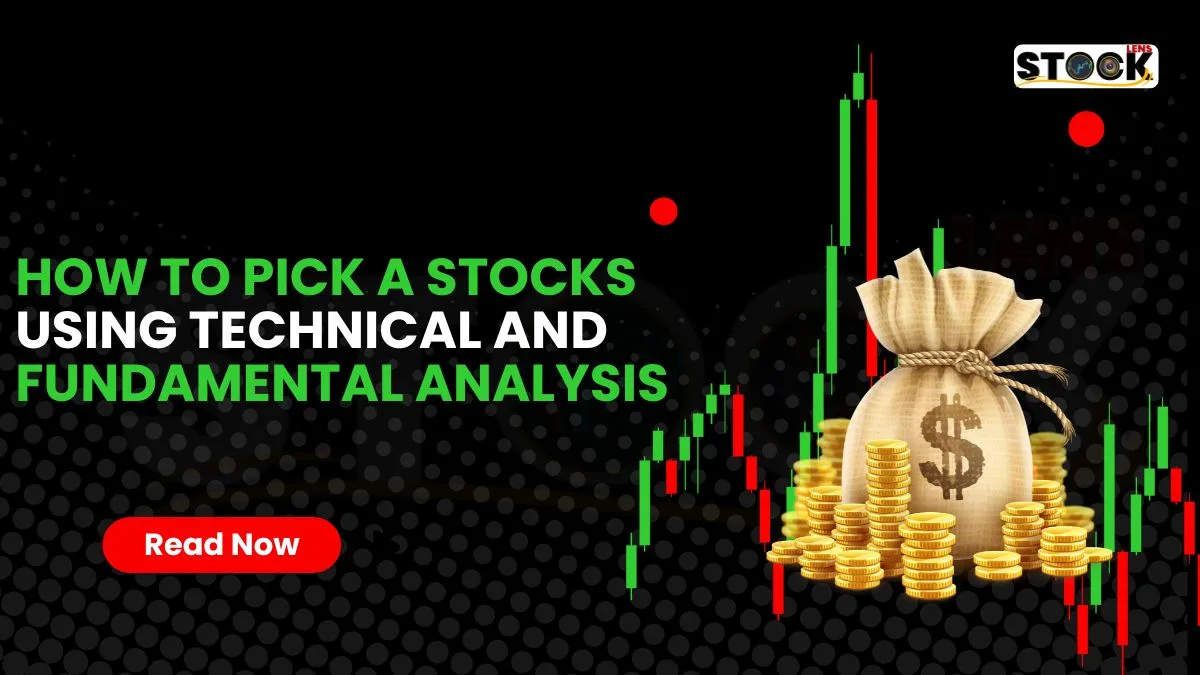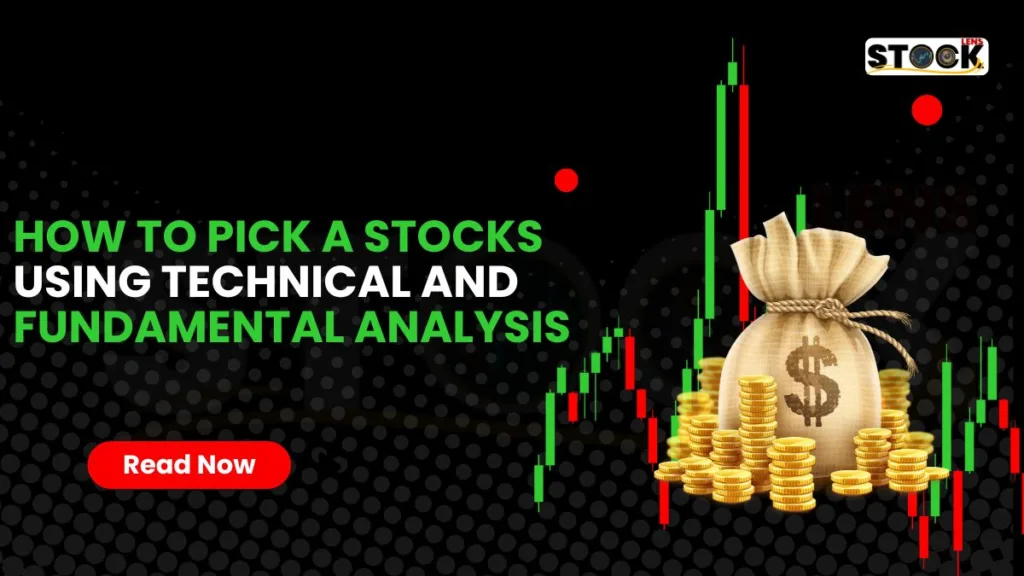Investing in the stock market can be both exciting and scary. Thousands of companies are there to choose, then it is hard to decide for new investor, which stock to buy? While evaluating stock two primary methods are there fundamental analysis and technical analysis. Both approach offers unique insights, and when combined, they can provide a expansive view of a stock’s potential.
The Thing About Financial Literacy
We think that more information is useful. Hopefully no, our experience tells us that the more information a financial investor gets the, more they will be scared early on. Because they will feel, there is so much out there that I don’t know. So I am taking the write decision or not? And it is there money, right? And that is what they want to risk.
So it is always important that a new investor, or a scared investor should be given a step-by-step guide. Let them get comfortable with that journey of investing after that, they will themselves select that if they want to put more money in real estate or learn more about Mutual Funds or learn about what stocks to buy and so on. So this article is meant to serve that purpose.
Fundamental Analysis while pick a Stocks
If you want to do Fundamental Analysis while selecting a stocks what all points to check. you should go through its annual reports, Management Discussion and analysis, what the auditors has to say (Audit Reports) and lot of important ratios, industry analysis as well and so many points in fact I have talked about a 8 point theory. For valuation you have to check that whether the company is currently undervalued or overvalued. There are so many methods for valuation of the stocks there are price to sales method, PE (Price to Earning) method of evaluation, EV/Ebitda and many more methods.
Fundamental analysis involves evaluating a company’s intrinsic value by examining various financial and economic factors. At the end the goal is to determine whether a stock is overvalued or undervalued based on its financial health and future prospects.
Key Components of Fundamental Analysis
Financial Statements: Analysts scrutinize a company’s income statement, balance sheet, and cash flow statement to assess profitability, debt levels, and cash generation capabilities.
Financial Ratios
PE Ratio
Ratios like the Price-to-Earnings (P/E) ratio, Means in short how much money you are ready to give for a Dollar earning. So somebody is trading at 20 PE ratio means you are giving $20 for earning $1. You are giving more because its growth potential or earning potential is high.
PE Ratio = Stock Price/ earnings per share. PE ratio vary on sectors.
Return on Equity (ROE) helps us assess the return the shareholder earns for every unit of capital invested. Measure the company’s ability and efficiency to generate profits from the shareholder’s investments.
I look for ROE of above 15%.
But ROE has a small problem
Imagine Hanley a person’s supermarket need $2000 to make $200 profits.
If Hanley gives $2000 to his supermarket, ROE= Profit/Equity =$200/$2000=10%
But if Hanley gave $1000 and the remaining $1000 was debt then ROE=$200/$1000 = 20%
With additional debt, ROE doubled, high ROE is great but not if there is high debt, high debt returns in higher interest payments.
ROCE Return on Capital Employed
Indicates the company’s profitability by taking into consideration the overall capital it employs.
ROCE= Profit before interest & Taxes/Overall capital Employed
ROE VS ROCE
Never us either ROE or ROCE alone. Always use them together.
If ROCE> ROE, there is higher chance of little or no dents on his books.
If ROE> ROCE, we can assume the company is highly leveraged.
If profit growth is higher than interest expenses, then it is good.
Debt-to-Equity (D/E) ratio
Debt-to-Equity (D/E) ratio help in comparing a company’s performance to industry standards and competitors.
Earnings Per Share (EPS): EPS per outstanding share of common stock for a company. EPS indicates a company’s profitability on a per-share basis, providing insight into its financial health. Shown in the annual report of the company.
EPS = Net profit/number of common outstanding shares.
Revenue and Profit Margins
Consistently revenue growth and healthy profit margins greater than 7 years are indicators of a company’s operational efficiency. If it greater than 7 years then it will be ok.
Economic Indicators
Comprehensive economic factors such as interest rates, inflation, and GDP growth can impact a company’s performance and stock price. While investing or choosing a stock this factor also important to know.
Industry and Competitive Position
Company’s position within its industry and its competitive advantages is necessary for long-term investment decisions.
For e.g. Apple Inc. (AAPL) Apple Inc. (AAPL) is a leading technology company known for its innovative products. Fundamental analysis of Apple would involve examining above fundamental study factor that could influence its performance.
Pick a Stock Using Technical Analysis
What do I check in Technical Analysis there are the typical sets to check the trend, you have check the MACD, RSI, VWAP, Moving Averages, Trend-lines, Support and Resistance, And few more methods to decide whether the stock is good or not.
Core Elements of Technical Analysis
Price Charts
With the help of charts we see the historical price movements, helping analysts identify trends and patterns. In technical analysis price is important.
Candlestick Patterns
Patterns like Doji, Hammer, and Engulfing can signal potential price reversals.
Such a patterns are available on internet we tried to cover all the candlestick pattern in upcoming article.
Support and Resistance Levels
Where a downtrend can be expected to pause due to a concentration of demand is a Support level of the price. Resistance is where a trend may pause or reverse due to a concentration of selling interest. If you are long term investor then on long time you can use the Support and Resistance for entry and exit.
Technical Indicators
Tools like Moving Averages (MA), Relative Strength Index (RSI), and Moving Average Convergence Divergence (MACD) are useful to find assessing momentum and potential price movements.
Moving average
If you find a stock for long term then 200 EMA (Exponential Moving Average) strategy is work when price is come near or touches 200 EMA in upward direction in higher time frame Daily Weakly then you can invest in that stock. This strategy does not work 100% but this will give you an idea or confirmation signal.
Volume Analysis: Volume is the important in chart it indicates the strength of a price move; increasing volume confirms an existing trend, while decreasing volume may signal a reversal.
Fundamental And Technical Analysis
Fundamental analysis provides us insights into a company, technical analysis offers tools to identify optimal entry and exit points. By combining both, investors can make more informed decisions. This TechnoFunda analysis is crucial while pick a stock for long term investment.
For long term investing
If you are investing for a long term then always pick a blue chip stock they have liquidity, strong corporate governance, also the potential of growth that’s why for reducing the risk always give a priority to blue chip stocks. Also do the company’s Fundamental study as well before investing. For choosing blue chip stocks use the screeners and buy into S&P 500.
Step-by-Step Guide to Selection
Pick a Stocks Using Fundamental Criteria
Find companies with strong financial health, consistent earnings growth, and a competitive side. Use above mentioned financial ratios to compare companies within the same industry.
Analysing Technical Indicators
Examine price charts to identify trends and patterns. See the support-resistance level and confirm trend with the help of Moving averages. Also use other above mentioned technical indicators to assess momentum and potential price movements.
Evaluating Market Sentiment
Consider comprehensive market trends and economic indicators that could impact the stock’s performance. Market sentiment reflects the collective feelings and attitude of investors towards the financial markets, a specific sector or company. while evaluating market sentiment factors including economic reports, price history, seasonal trends and even global events are important to understand.
Making an Informed Decision
And the last step is Combine insights from both analyses to determine the stock’s potential and make an informed investment decision.
Conclusion
Selecting the right stock requires a broader approach that considers both the company’s intrinsic value and market trends. By the help of both fundamental and technical analysis, investors can make more informed decisions, aligning their investments with their financial goals and risk tolerance with an appropriate steps.
Note: The information provided in this article is for educational purposes only and should not be construed as investment advice. Always conduct thorough research or consult with a financial advisor before making investment decisions.











